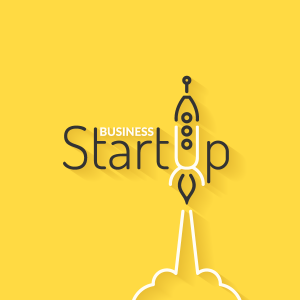
From Zero to Hero: How to Market Your Startup Like a Pro
more from my blog Launching a startup is an exciting endeavor, but it can also be a challenging one. One of the biggest challenges facing

Prototyping is a crucial step in the process of developing a successful startup. It allows entrepreneurs to test their ideas, get feedback from users, and refine their products before launching them into the market. In this article, we’ll take a comprehensive look at how to go from idea to MVP, including choosing the right tools and techniques for prototyping, refining your product through iterative design and testing, and collaborating with a team of designers, engineers, and stakeholders.
Prototyping is essential for startups because it allows entrepreneurs to validate their ideas and reduce the risks associated with launching a new product. By creating a prototype, entrepreneurs can test their product’s feasibility, functionality, and user experience. Additionally, prototyping helps to identify design flaws and areas for improvement before launching a product into the market.

Before you start prototyping, it’s important to define your minimum viable product (MVP). Your MVP is the most basic version of your product that still provides value to your users. The MVP should have enough features to solve the user’s problem and deliver a positive user experience. Defining your MVP allows you to focus your prototyping efforts on the most important features and functionalities of your product.
There are many different prototyping techniques and tools available to entrepreneurs. Some of the most common prototyping techniques include paper prototyping, wireframing, and digital prototyping. Each technique has its advantages and disadvantages, depending on the complexity of your product and the stage of development. Choosing the right prototyping tool and technique can help you save time, reduce costs, and improve the accuracy of your product testing.
User feedback is critical in the prototyping process. It allows entrepreneurs to gather valuable insights from their target audience and identify areas for improvement. By conducting user testing, entrepreneurs can determine if their product meets the needs of their target market, if it’s easy to use, and if it provides value. User feedback can help you refine your product and ensure that it meets the needs of your target market.
Prototyping is an iterative process. It involves creating multiple versions of your MVP and testing them with users. Through iterative design and testing, you can refine your product, identify design flaws and usability issues, and improve the user experience. The goal of iterative design and testing is to create a product that is not only functional but also user-friendly and enjoyable to use.
Prototyping can be expensive, especially if you’re working with a tight budget. Fortunately, there are many cost-effective prototyping strategies that entrepreneurs can use. One strategy is to start with low-fidelity prototypes, such as paper prototypes or wireframes. Another strategy is to use prototyping tools that offer free or low-cost plans. By prototyping on a budget, you can save money and still create a product that meets the needs of your target market.
Finally, building a successful MVP requires collaboration with a team of designers, engineers, and stakeholders. By working with a team, you can leverage their expertise and perspectives to refine your product and create a better user experience. Additionally, collaboration can help you identify and address potential problems early in the development process, reducing the risk of costly mistakes later on.
In conclusion, creating a prototype or minimum viable product is an essential step in the process of bringing a product or service to market. By creating a prototype or MVP, you can validate your idea, test it with potential customers, and make necessary adjustments before investing significant time and resources into the full-scale development of the product or service.
To create a successful prototype or MVP, it’s important to start with a clear understanding of your target market and their needs. You should also have a solid understanding of the features and functionalities that are most important to your users. With this information in hand, you can develop a prototype or MVP that addresses these needs and delivers the value your users are looking for.
Once you have created your prototype or MVP, it’s important to test it with potential customers to get their feedback and make necessary adjustments. This feedback can be invaluable in helping you refine your product and ensure that it meets the needs of your target market.
Ultimately, creating a prototype or MVP is a critical step in the process of bringing a new product or service to market. By following the steps outlined in this article and keeping the needs of your target market front and center, you can create a prototype or MVP that is both valuable and successful.

more from my blog Launching a startup is an exciting endeavor, but it can also be a challenging one. One of the biggest challenges facing

more from my blog Prototyping is a crucial step in the process of developing a successful startup. It allows entrepreneurs to test their ideas, get

more from my blog Starting a small business requires capital, and many entrepreneurs struggle to secure the funding they need to get their venture off